

John Akomfrah’s “Future History” (until May 3, 2020) majestically fills three major galleries on the fourth floor of the Seattle Art Museum with video works projected on huge walls in separate darkened rooms.
Brilliantly curated by Pamela McClusky, Curator of African and Oceanic Art, the three works span 500 years of history from the beginning of the slave trade in Elizabethan England to the present moment. Each work is immersive and mesmerizing. You will not be able to stop watching them. As McClusky pointed out, the experience is the opposite of racing through a gallery and giving 30 seconds to each work. Here we watch for up to 45 minutes.
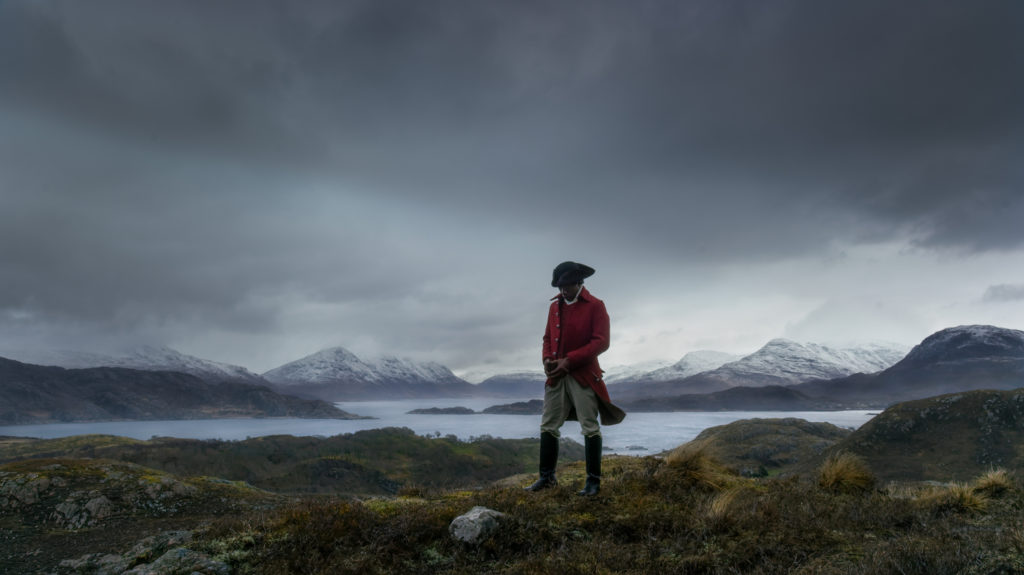
We first encounter Vertigo Sea of 2015. In this photograph we see Olaudah Equiano. Thanks to Pamela, we have what are known as “footnotes” for the exhibition, individual sheets we can take home. I had never heard of Olaudah Equiano, but he is monumentally important in the history of slavery. Here we see a man dressed in the typical garb of the eighteenth century gentleman. Looking closely you can see he is dark skinned. He appears to be brooding in a desolate Arctic landscape.
Equiano wrote an autobiography published in 1789 that describes his personal experience from being captured by slavers when he was eight, taken to Virginia, London and West Indies, but finally buying his freedom in 1766. He then began collecting and recording whale and polar bear killings. He overturned the cliché of Africa as a place of barbarism, and describes instead his home as “idyllic. with strong leaders, varied foods and festivals, and defined sense of order. This memory is contrasted with vivid descriptions of slave traders as cruel and barbaric; of suffocating sweat, smells and traumas on ships crossing the Atlantic and the humiliations he endured and and witnessed in the slave trade around the world. ” Equiano led the abolition movement in England and his autobiography is said to have contributed to the success in abolishing slavery in England and the British Colonies ( although not the huge financial benefits of the trade).
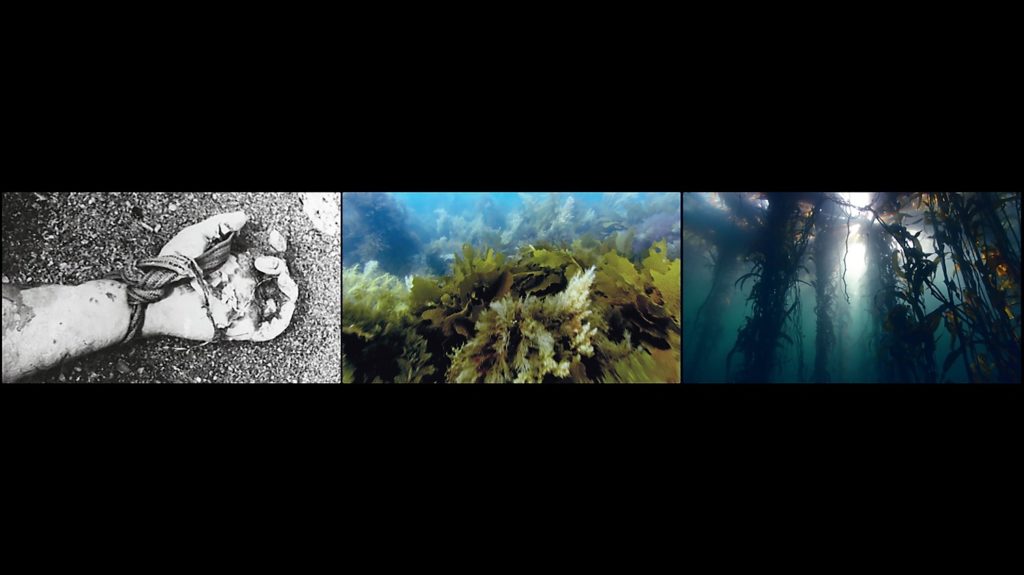
Projected as three large adjacent images, Vertigo Sea overwhelms us. Sometimes the images flow from one to another, other times they sharply clash. If you have ever seen one of David Attenborough’s BBC nature films, you will recognize some of his incredible footage: the artist gained permission to use it after befriending Attenborough for a full year. But Akomfrah goes the extra step that Attenborough only touches on in his most recent film: climate crises caused by our own actions.
He juxtaposes stunning nature sequences with the murder of humans in the slave trade and the hunting of whales. We watch horrified as the spears enter the animal and the helpless whale bleeds into the sea and dies, even as another screen celebrates their beauty. We gasp in disbelief at the reenactment of slaves forced overboard alive. Akomfrah gives us the unrelenting brutalities of genocide by hunters of animals and people who shared a single minded goal – to make money. Interspersed in the film are many quotes including Moby Dick and Heathcote Williams 1988 poem Whale Nation:
“From space, the planet is blue/ From space the planet is the territory/Not of humans/ but of the whale.”
Occasionally the sequences take a breath with three blank blue screens. But you will not be able to stop watching.
Akomfrah spoke of the flux and fluidity of water as suggesting the past, present and future. Our bodies are 90 percent water. But rather than acknowledge our connection to the sea, the planet, and its occupants, he stated, our hyper consumerism is destroying it.
I heard Akomfrah speak in a conversation with D.J. Spooky at the museum (right before all programming shut down because of the THE VIRUS). He met DJ Spooky while he was making The Angel of History in 1995.
Angel gives us Afro- Futurism: musicians, writers, poets, actors, journalists, philosophers and techies. Afro-Futuriam, is described by the brilliant writer and musician Greg Tate “It’s like a beautiful compendium of the cats who were obsessed with what I call the “imagineering” of ideas—putting Black folks in a science fiction setting, in the future, or in the retro-future, listening back to ancient African kingdoms as a kind of science fiction fodder.” (Capitol Bop , interview 2015).
Note carefully that reference to African kingdoms, which also connects to cosmology and African mysticism. The musician Sun Ra is a major figure in these connections. He claimed to actually be an alien himself.
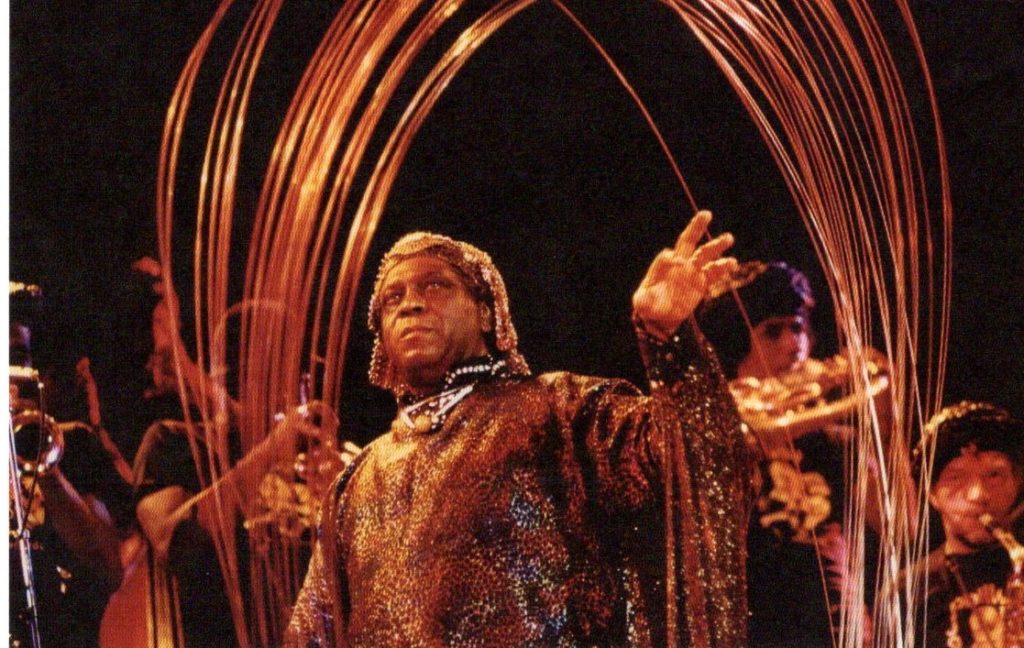
Seventeen creative thinkers, ranging from the cosmic musician Sun Ra to Nichelle Nichols, Star Trek actress, spin off Tate’s idea that “all those things that you read about- alien abduction and genetic transformation- they already happened. How much more alien do you think it gets than slavery, than entire mass populations moved and genetically altered, forcibly dematerialized?” (quoted by Kodwo Eshun). Tate died last fall at the young age of 60.
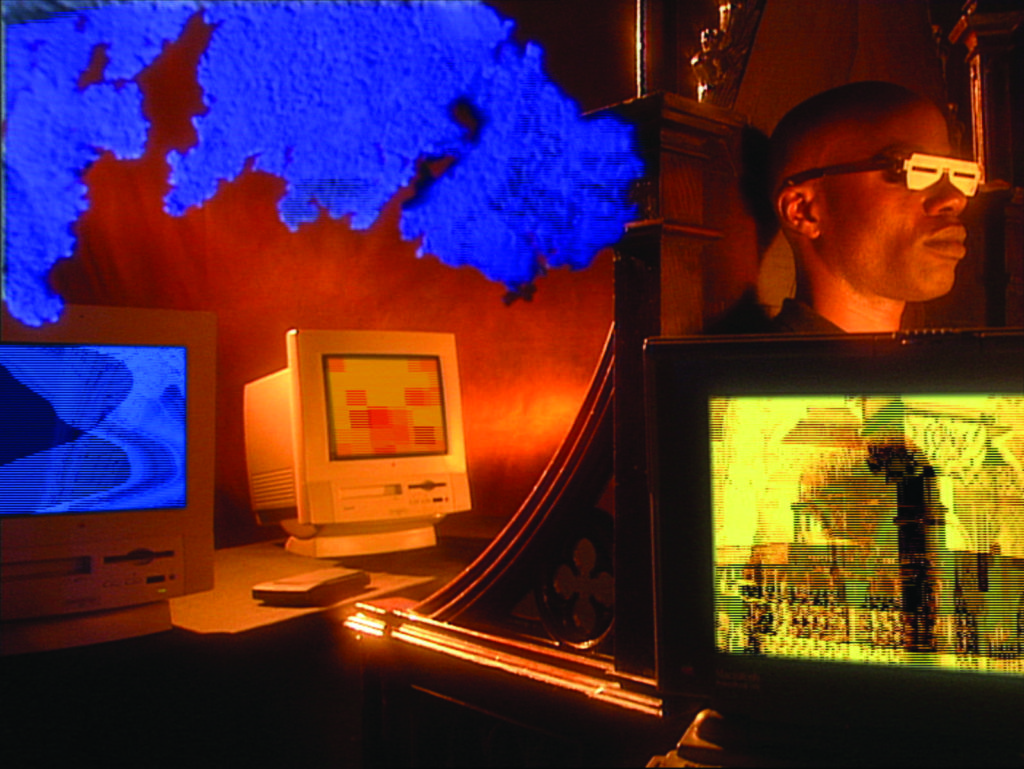
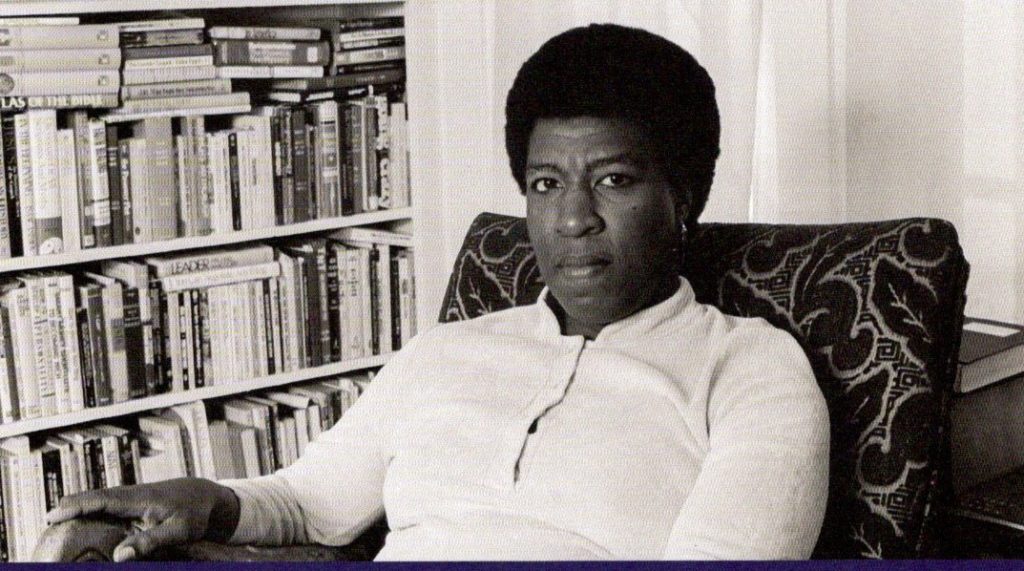
One of the compelling speakers was Octavia Butler, the only time she was recorded before her premature death in 2006. She wrote the Parable of the Sower in 1993 which predicts pretty much where we are today.
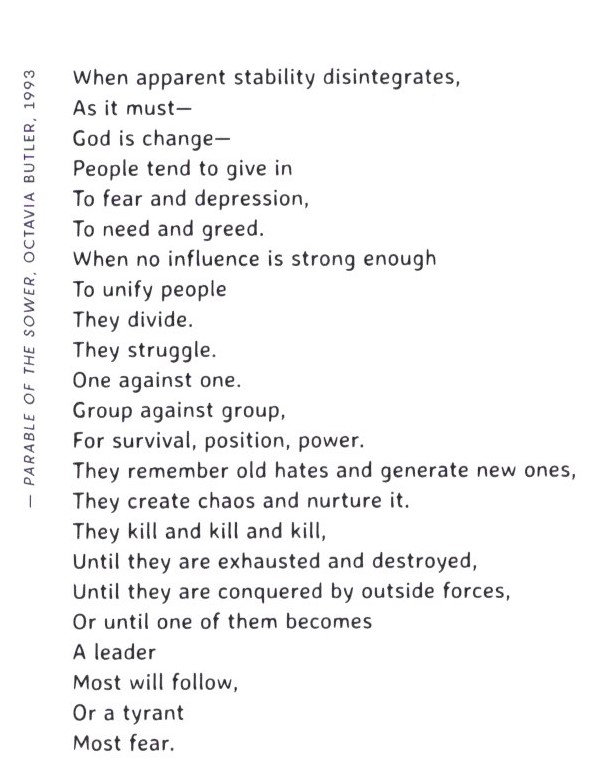
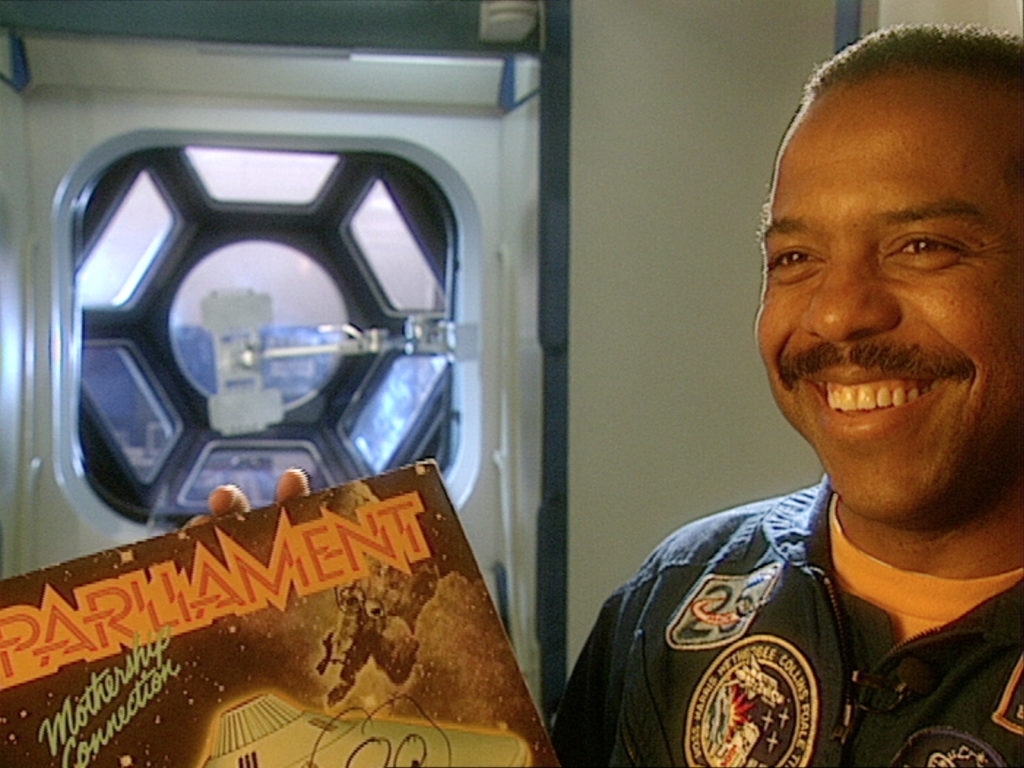
Another revealing person is Dr. Bernard A. Harris, Jr, the first African American astronaut to walk in space.
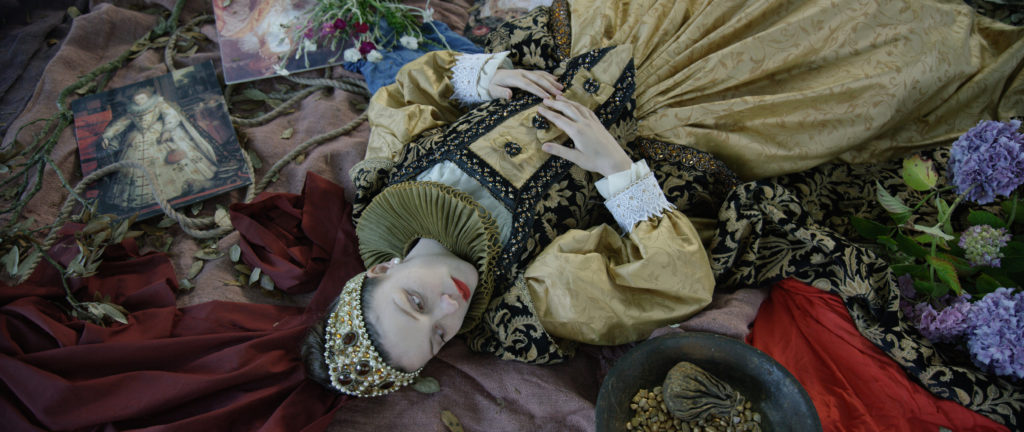
The third piece Tropikos 2016 silently and chillingly presents the historical roots of the slave trade in Plymouth, England, the major slave trading port during the reign of Queen Elizabeth. Here Akomfrah quotes from Paradise Lost, and The Tempest. He segues from images of the royal family and its pirates, decked out in the riches from the slave trade, to a silent raft moving up the river Tamar.
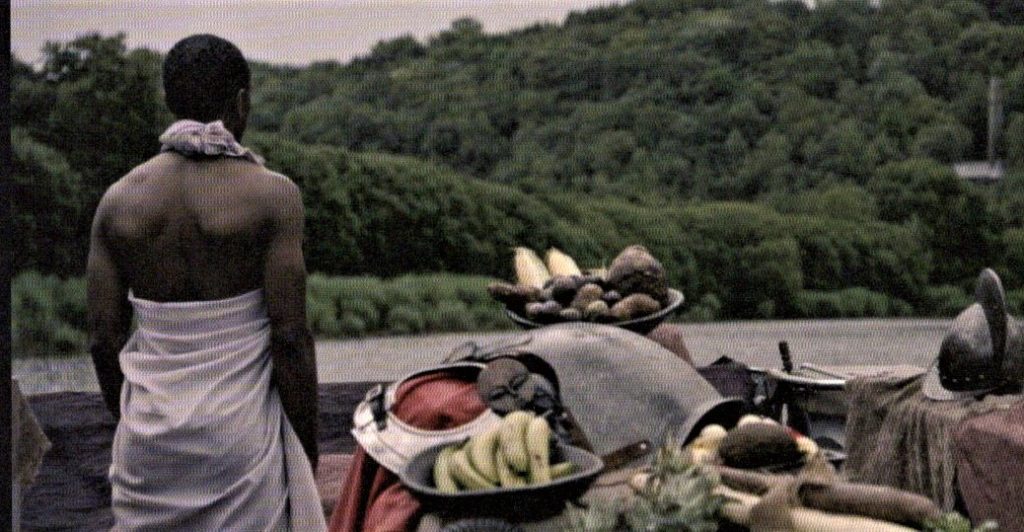
The raft holds one slave with his back to us as well as potatoes, pineapples, bananas, an 18th century metal helmet, and a sculpture of Akuaba associated with childbirth in Ghana. At the entrance of the exhibition is another Akuaba, from the Dogon people of Mali who holds her hands up in supplication for water.
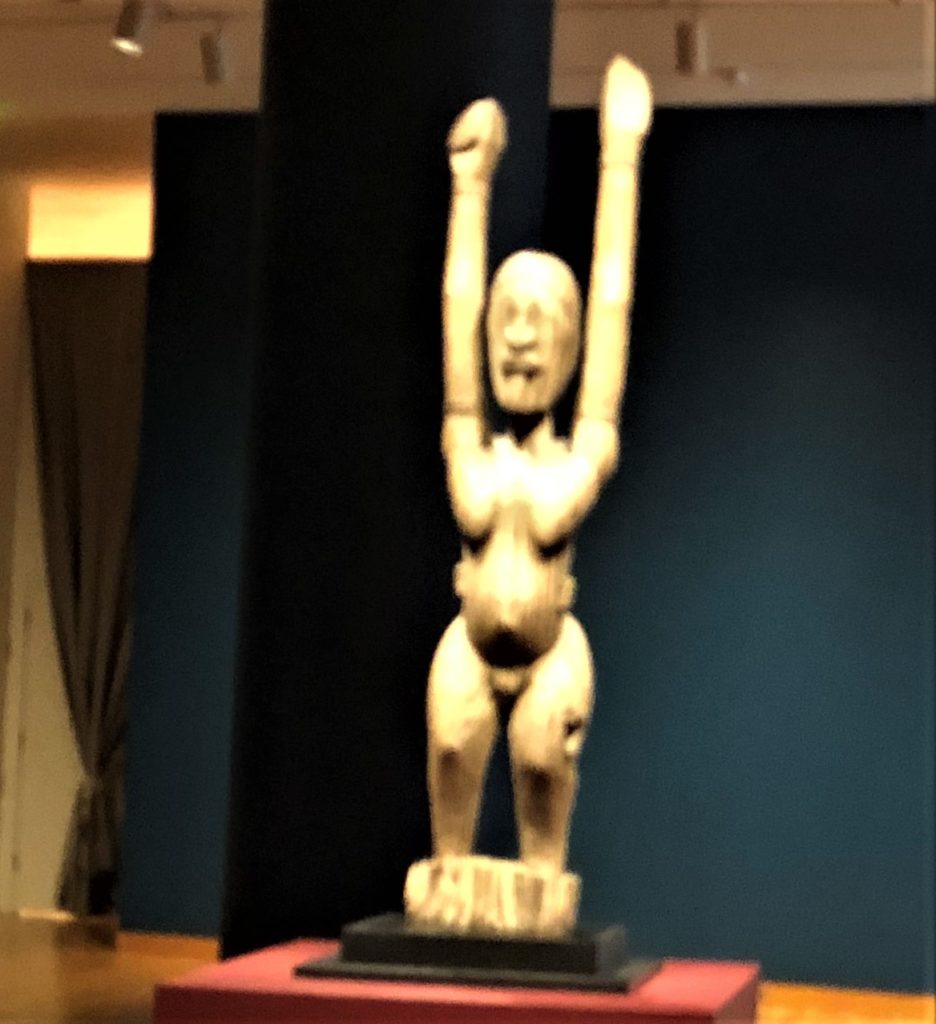
According to curator Pamela McClusky ” She holds her hands up to implore the blessings of nommo, the master of water, who provides rain when it is needed. The Dogon have a saying, “people can’t stand and pray all day, but the sculpture can”.
Right now that seems like a place where we all are, imploring the blessings of the gods, in our case to help us work together to survive this crazy situation that our government brought on us because of their incompetence and stupidity in refusing test kits from the WHO in early February and closing down the CDC area responsible for planning for pandemics.